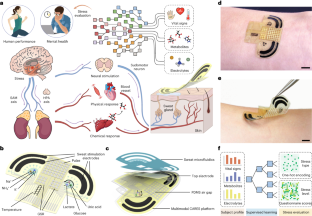2024-01-22 パシフィック・ノースウェスト国立研究所(PNNL)
◆通常のプロテオミクス測定では、これらの細胞構造が混ざり合い、信号ネットワークが結合しますが、この手法を使用すると、島領域でのタンパク質シグナルが局所化され、島細胞周辺に存在することが明らかになりました。これにより、生物学的に興味深いタンパク質や経路が特定の領域に関連付けられ、新しい生物学が同定される可能性があります。
<関連情報>
- https://www.pnnl.gov/publications/chemical-and-computational-advances-enable-2d-proteomics-measurements-spatial-signals
- https://www.mcponline.org/article/S1535-9476(23)00103-2/fulltext
ヒト膵島微小環境のプロテオームマッピングにより内分泌-外分泌シグナル伝達の影響範囲が明らかになる Proteome Mapping of the Human Pancreatic Islet Microenvironment Reveals Endocrine–Exocrine Signaling Sphere of Influence
Sara J.C. Gosline,Marija Veličković,James C. Pino … Kristin Burnum-Johnson,Ying Zhu,Paul D. Piehowski
Molecular & Cellular Proteomics Received in revised form: April 24, 2023
DOI:https://doi.org/10.1016/j.mcpro.2023.100592
Highlights
•microPOTS enables deep proteome imaging of pancreatic islets and their microenvironment.
•We identified and quantified over 6000 proteins from ∼50,000 μm2 tissue area samples.
•Differential expression and network analyses identified pathways uniquely active in islets.
•Rank-based statistics enable the characterization of gradients across individual tissue images.
Abstract
The need for a clinically accessible method with the ability to match protein activity within heterogeneous tissues is currently unmet by existing technologies. Our proteomics sample preparation platform, named microPOTS (Microdroplet Processing in One pot for Trace Samples), can be used to measure relative protein abundance in micron-scale samples alongside the spatial location of each measurement, thereby tying biologically interesting proteins and pathways to distinct regions. However, given the smaller pixel/voxel number and amount of tissue measured, standard mass spectrometric analysis pipelines have proven inadequate. Here we describe how existing computational approaches can be adapted to focus on the specific biological questions asked in spatial proteomics experiments. We apply this approach to present an unbiased characterization of the human islet microenvironment comprising the entire complex array of cell types involved while maintaining spatial information and the degree of the islet’s sphere of influence. We identify specific functional activity unique to the pancreatic islet cells and demonstrate how far their signature can be detected in the adjacent tissue. Our results show that we can distinguish pancreatic islet cells from the neighboring exocrine tissue environment, recapitulate known biological functions of islet cells, and identify a spatial gradient in the expression of RNA processing proteins within the islet microenvironment.
Graphical Abstract



